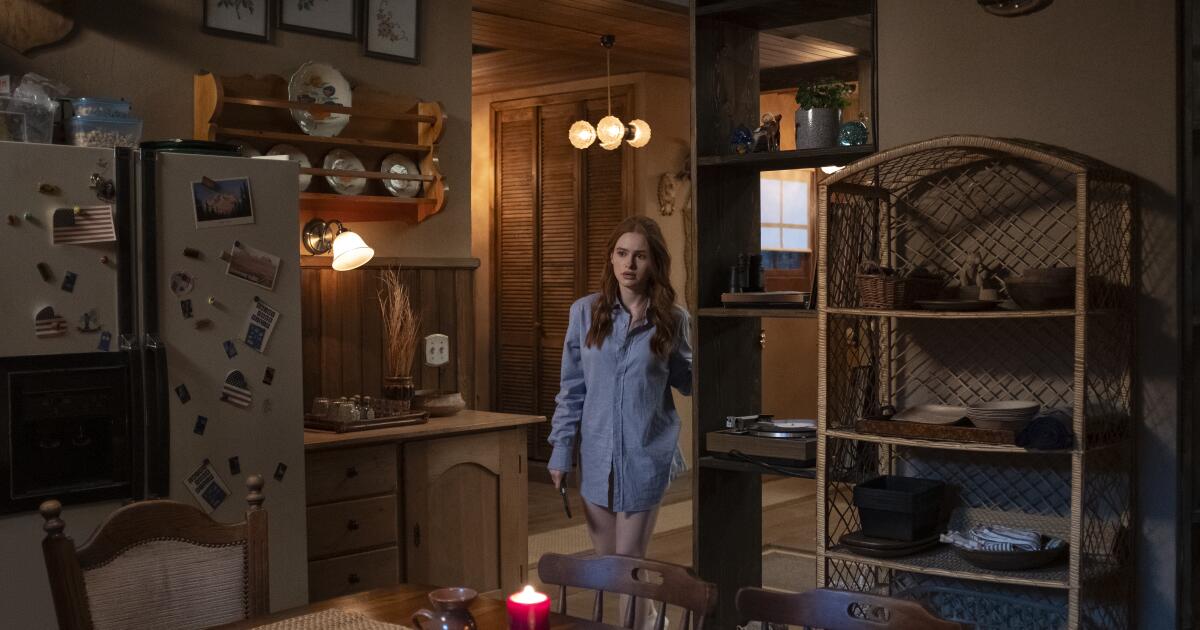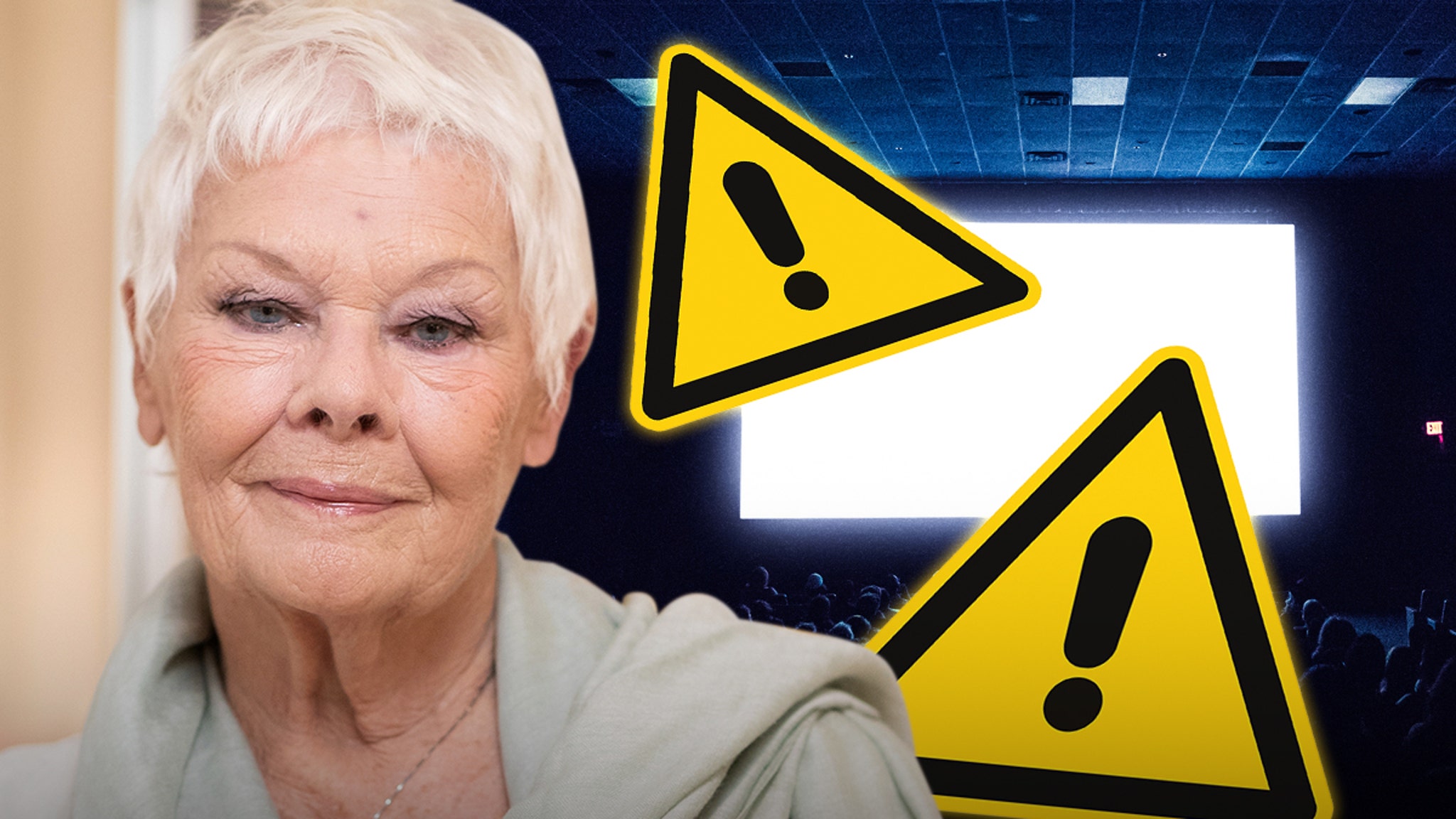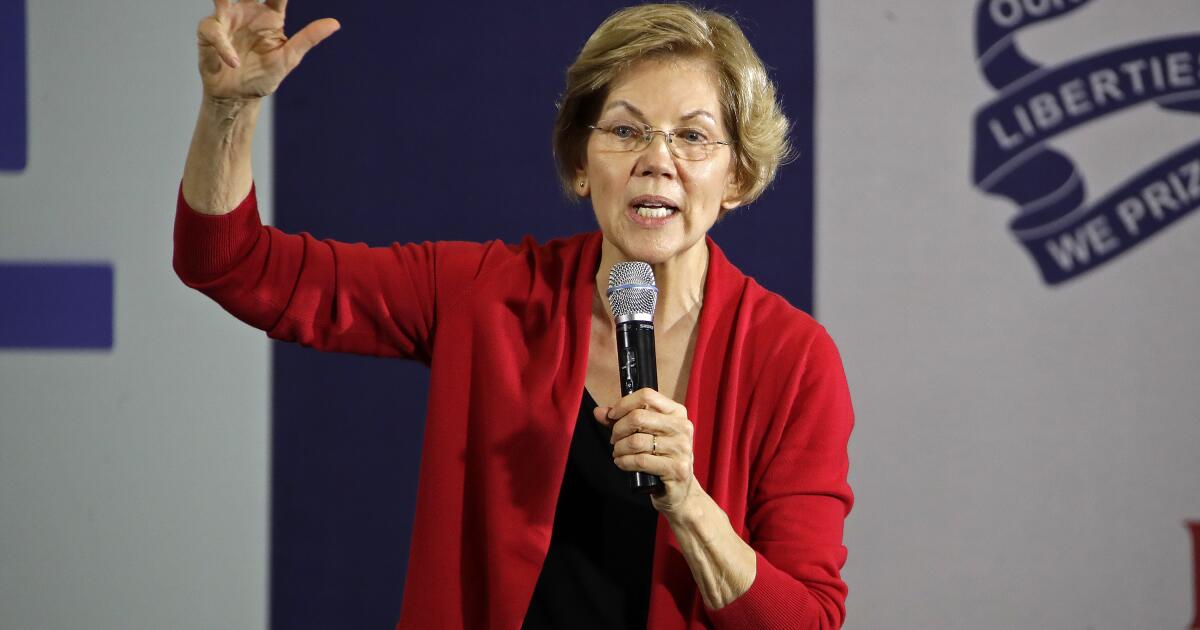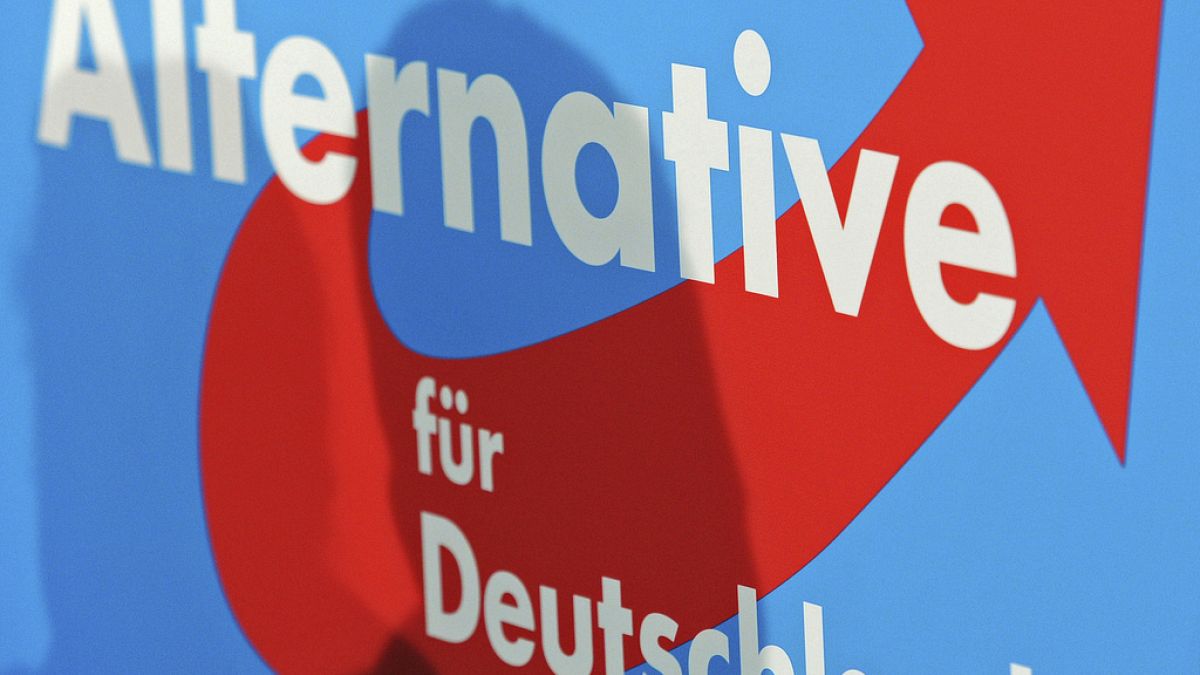Sports
How Freddie Freeman — now back on a hitting streak — worked through early-season slump

On the surface, it might not have looked like much of a slump.
To star Dodgers slugger Freddie Freeman, however, his performance through much of April was certainly starting to feel like one.
Entering play Monday, Freeman was batting .306 with eight doubles, two home runs and 19 RBIs. He had a .861 on-base-plus-slugging percentage and 142 OPS+ (meaning, essentially, he has been 42% more productive than the average MLB hitter).
Those were drops from his first two seasons in L.A., in which he finished top-five in MVP voting both times.
But a slump? Really?
“I take pride in being consistent,” Freeman said. “And I’m not being consistent right now.”
That, at least, was what Freeman was feeling two weeks ago, in the midst of an eight-for-47 stretch that dropped his batting average to .259.
“I’m not hitting the pitches I’d normally hit,” Freeman said then. “There’s a lot going on up there. Trying to figure it out.”
There are points in every season where Freeman cools off, and his precise swing mechanics get out of whack. Almost always, it’s because his hips rotate too open, and his bat cuts short and across the strike zone — not square and straight through it.
The result: Freeman will stop hitting fastballs for opposite-field line drives, or barrel up breaking pitches into the right-center field gap. Instead, he will hit lazy pop-flys, or yank a ground ball to the pull side, or simply foul off mistake pitches he’d typically clobber.
“I’m not swinging at bad pitches,” Freeman said, at the height of his early-season struggles. “I’m just not hitting them where they should be going.”
The fix: A curated routine of slump-busting pregame techniques; especially a signature “net drill” in which Freeman will set up about an arm’s distance from a batting screen, then try to execute a swing without brushing the barrel against, hoping to recalibrate the inside-out bat path that has long been key to his career .301 batting average.
“I usually only bring it out 5-10 times per year,” Freeman said of the drill, which he has been doing since he was a kid. “That’s usually when things are really off.”
This year, Freeman dusted it off early, one of several notable alterations he has made to his meticulous pregame process.
In recent weeks, the 34-year-old has also started taking almost daily rounds of outdoor batting practice, a rarity during his first two years with the Dodgers (he typically prefers to hit in the clubhouse batting cages).
Overall, he has increased his total amount of pregame swings three-fold, he said, “just to hurry this [process] up.”
Lately, at last, better results have started to follow.
Freeman entered Monday on an eight-game hitting streak, going 12 for his last 27 with 11 RBIs and more extra-base hits (five) than strikeouts (four).
Half of those games have been multi-hits efforts. And in all but one, he has recorded a hit either up the middle or the other way — a telltale sign of synced-up mechanics in his swing.
“Everything’s kind of been working,” Freeman said. “Just been kind of doing really really slow, soft swings in BP, and then let the adrenaline of the game take the swing a little bit harder. Things the last week have been a lot better.”
It’s a welcome sight for the Dodgers, who haven’t often seen their $162 million first baseman struggle since arriving in March 2022.
“He’s gonna come out of it,” manager Dave Roberts said this weekend. “But there’s some sadness when he’s in a dark place.”
Phrases like “sadness” and “dark place” might not square with Freeman’s actual numbers.
Even at his recent low point, when a three-game hitting drought culminated with a three-strikeout performance on April 19, Freeman’s production was still comfortably above league average.
Even as he battled inconsistency at the plate, he still wore a perpetual smile, joking around with coaches and teammates.
“Sometimes players are in a dark spot and they really feel it and mean it,” Roberts said. “But Freddie knows he’s a great hitter … So I think he has some levity with it.”
Indeed, when asked last week if he was being superstitious by changing his hitting routine, Freeman referenced a line from Steve Carell’s character in “The Office,” Michael Scott.
“Just a little stitious,” he responded.
When told, jokingly, this weekend, he must be the worst .300 hitter in baseball, Freeman chuckled and shrugged.
“Feels like it,” he said.
Still, the reason this slump felt different, why the frustration was boiling much closer to the surface, is because it came on the heels of similar struggles last fall.
At the end of the 2023 regular season, Freeman batted just .262 over his final 17 games (a notable drop from his .339 average before then). Then, in the Dodgers’ postseason sweep to the Arizona Diamondbacks, his swing seemed completely off, resulting in a one-for-10 mark that loomed large in the Dodgers’ early elimination.
“That’s why there has been so much frustration,” Freeman said earlier this month. “Because I know what I’m doing wrong. It’s over-rotation with my hips, which causes [other issues]. It’s the same thing every time. But for some reason, I’ve gone through everything about 20 times already and it hasn’t clicked yet. So that’s why, here I am, hitting outside, doing little things differently, [trying to] smile through it.”
Finally, over the last week, it seems like the tide has started to turn.
In addition to his eight-game hitting streak, Freeman snapped another kind of drought on Sunday, hammering his first home run since the Dodgers’ home opener exactly a month earlier.
“No,” Freeman said when asked if he was worried about adding to his home run total, after it’d been stuck at one for 26 games. “If you’re just going for power when you don’t have a good swing already, it’s just never going to happen.”
But now, thanks to a laborious swing progression and trust in his hitting process, the moment offered the latest sign of Freeman’s continued turnaround; that an elongated (for him, at least) slump to start the season finally appears to be largely done.
“There’s still bad swings in there,” Freeman said, “but ultimately there have been a lot more good swings lately.”

Sports
Column: The Padres continue to consistently draw fans to Petco Park. It's about more than winning
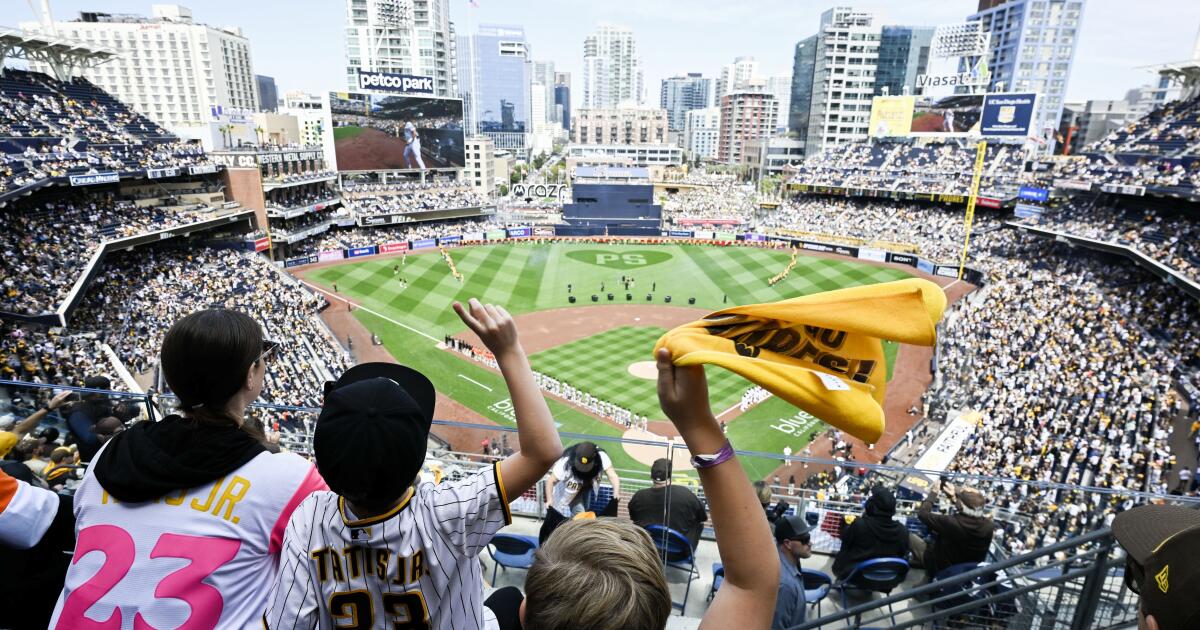
The Dodgers lead the major leagues in attendance. They always do. No surprise there.
The team that ranks second in attendance is the one that has a rally towel hanging next to the home dugout, urging the players to “COMPETE FOR PETE.”
Peter Seidler lived the final decade of his life transforming the Padres into a team that would compete for San Diego. This is a small market in every way — by population, by geography, by television viewers — and Seidler simply disregarded the facts.
San Diego was not a small market because Seidler said it was not. The Padres spent big because Seidler said they should win.
And, six months after Seidler passed away, his legacy shines every night at Petco Park. The Padres — the small-market Padres — have attracted more fans this season than any team but the Dodgers.
Last year, the Padres attracted more fans than any team but the Dodgers and New York Yankees. In the four post-pandemic seasons, the Padres have ranked among the top five in attendance every season, an era in which their rosters have featured Fernando Tatis Jr., Manny Machado, Yu Darvish, Joe Musgrove, Xander Bogaerts, Juan Soto, Blake Snell and Josh Hader, all of them all-stars.
The warning lights flashed in the minds of fans last winter, in the wake of Seidler’s passing, when the Padres slashed payroll by one-third, traded Soto and let Snell and Hader go in free agency.
“It starts to look like, ‘Here we go again,’ ” said Tony Gwynn Jr., the former Padres outfielder and current Padres broadcaster.
Padres owner Peter Seidler, who died last November, set a tone with his ballclub that has translated into success at the gate.
(Alex Gallardo / Associated Press)
“I think it was a little bit more tempered than it was a couple years ago,” said Dodgers manager Dave Roberts, who makes his offseason home in the San Diego area, “but I think they have built something here.”
On the field, the Padres don’t have much to show for all the excitement and all the investment beyond three postseason victories over the Dodgers two years ago. They raised ticket prices by an average of 9% for the 2024 season — after raising prices by an average of 18% for the 2023 season and 20% for the 2022 season, according to the San Diego Union-Tribune.
“If you were able to take a step back, you were able to see that this roster still had names and guys that make it nothing like it was pre-2019,” Gwynn Jr. said, referring to the heydays of the likes of Carlos Asuaje and Freddy Galvis.
“I think people can put their trust in this. I think they have shown that by showing up here. That’s with ticket prices going up, and I think that has a lot to do with the Padres keeping their word to this point.”
Indeed, after the turbulent winter, the Padres acquired pitcher Dylan Cease in March and two-time batting champion Luis Arraez two weeks ago.
The Padres capped season-ticket sales at a record 25,000. You can get on a waiting list, if you pay $100 per year for as many seats as you would like to buy.
The Padres project a new franchise attendance record this year — beyond the 3.27 million tickets they sold last year — and they set a Petco Park single-game attendance record of 46,701 against the Dodgers last Saturday.
Before that game, Jorge Casillas told me one reason why he renewed his Padres season seats.
“No matter what,” he said, “I’m watching a major league team.”
The Chargers’ move to Los Angeles in 2017 left the Padres as the city’s lone major league team. San Diego State put up a beautiful $310-million stadium to bolster its bid to join the Pac-12 Conference, only to see the Pac-12 implode.
Casillas said he believes the Padres can secure a wild-card playoff spot this season, after missing the postseason in 2021 and 2023, and every year from 2007 through 2019.
“We’re not like the Dodgers, obviously,” Casillas said. “We’ve had more bad years than good.
“But this stadium has everything — food, character, the right spot downtown. It’s really an event. It’s not just baseball. If we win, it’s even better.”
The Padres invested $20 million in expanding and reimagining the space behind center field, with grass and turf seating for close to 5,000 fans — akin to sitting on the outfield lawn in spring training — and a stage that enables the team to host bands before games and cozy concerts when the team does not play. The requisite social spaces are there, meaning bars for adults and play space for kids — in San Diego, that now includes wiffle ball, cornhole, a slide and “the tallest climbable bat in the world.” (How tall? 35 feet, 2-¼ inches.)

The area behind center field at Petco Park absorbed $20 million in upgrades that were completed in time for this season.
(Brandon Sloter / Getty Images)
“I think we have established a great ballpark experience, but that in and of itself isn’t going to be enough to sustain this level of attendance,” said Padres chief executive officer Erik Greupner, “nor is it our goal to sustain attendance on the basis of a ballpark experience.”
The Colorado Rockies boast a spacious bar atop right field, with majestic mountain views, and the San Francisco Giants offer a spectacular waterfront ballpark and garlic fries. But the Rockies have been so relentlessly miserable and the Giants so anonymous and uninspiring that fans have stayed home.
The Rockies, given the product, might have the best fans in baseball. This year, for the first time in 17 years, the Rockies do not rank in the league’s top half in attendance. (Local angle: The last-place Angels do not rank in the league’s top 10, after selling 3 million tickets every year from 2003-19.)
Greupner said the Padres want a roster headlined by established and sometimes costly stars and fortified with annual replenishment from their minor league system.
“I think the Dodgers have done that particularly well for a lot of years,” he said. “I think that’s the holy grail for any team in Major League Baseball.”
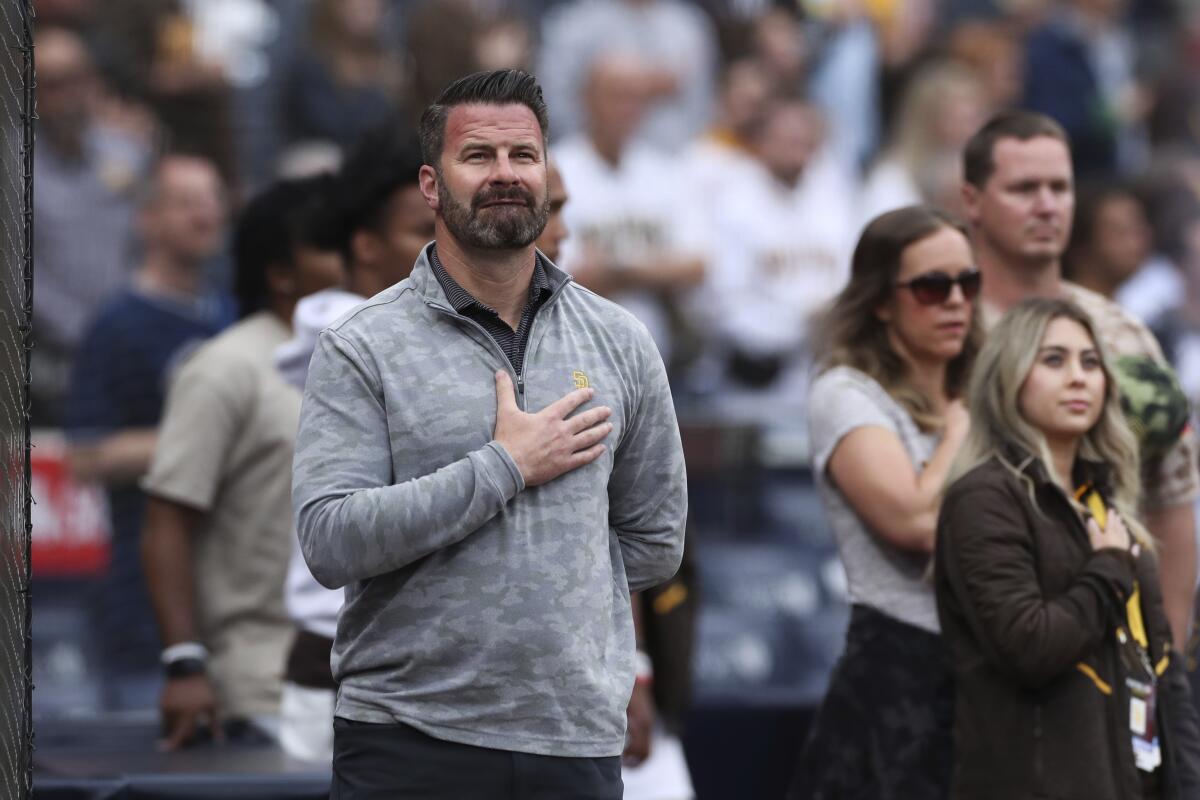
Padres CEO Erik Greupner says his team has “established a great ballpark experience, but that in and of itself isn’t going to be enough to sustain this level of attendance.”
(Derrick Tuskan / Associated Press)
It is. But what the Dodgers and Padres get — and the owners of so many other teams do not — is that sustainability and financial flexibility are boardroom buzzwords. The tell: “Let’s hire a guy from the Tampa Bay Rays.”
Flags fly for championships, not for financial efficiency. Fans want to win, and they also want to invest their hearts and wallets in players they can call their own for years.
Since 2010, the Rays have made the playoffs seven times — five more than the Padres. But the Rays’ roster churn is so unrelenting that the team has ranked in the bottom four in attendance every year since 2010.
It is not, as it turns out, just about winning. It is not just about the fan experience. It is both.
“Everybody has to raise their game to try to keep up with the Dodgers,” Greupner said.
The Padres try. Can’t say that for everybody.
Sports
Caitlin Clark's WNBA welcome is a reality check

UNCASVILLE, Conn. — As the seconds ticked down before her first WNBA game began, Caitlin Clark couldn’t stop moving. Waiting for the opening jump, she paced along the free throw line. She tugged at her shorts and fixed her ponytail. She swung her arms in an attempt to stay loose.
Then the ref tossed the orange and white WNBA basketball, but officials deemed it needed to be thrown a second time. Unlike the official’s toss, Clark might not want a complete redo of her debut. Still, there were definitely moments she will want back from a mixed individual performance and, ultimately, a disappointing loss.
She led the Indiana Fever with 20 points, yet she also notched 10 turnovers — the most ever in a player’s first WNBA game.
“I didn’t have the greatest start, so I think (there’s) just a lot to learn from,” Clark said. “There’s gonna be good ones. There’s gonna be bad ones.”
Caitlin Clark scored her first professional points with 5:24 to play in the first half, hitting a layup. @TheAthleticWBB pic.twitter.com/BqamXt3GBj
— Ben Pickman (@benpickman) May 15, 2024
She rewrote the record book over four years at Iowa, often making the hardest matchups and most difficult shots look like a breeze. Tuesday’s inglorious record was not expected. Just over a month has passed since Clark’s college career concluded, but life in the WNBA is here. If a reminder was needed, she showed in the Fever’s 92-71 defeat to the Connecticut Sun that she’ll, at times, have growing pains as she transitions into the professional ranks.
“She’s a rookie in this league,” Fever coach Christie Sides said. “This is the best league in the world. We’ve got to teach her what these games are gonna look like for her every single night and we’ve got to eliminate some of that pressure for her. That’s on me, that’s on my staff to have to figure out.”
All eyes are on Clark as she attempts to jump to the pros with high expectations to not just perform like she did in college but invigorate the league in a way no player has before. Tuesday’s season tipoff was in front of the Sun’s first home-opener sellout since 2003, and she’ll make her home debut in front of another raucous crowd Thursday. At Connecticut, hundreds, perhaps thousands, of fans wore No. 22 T-shirts with Iowa and Fever logos on them to celebrate Clark. (At one point, a “bandwagon fan” graphic appeared on the Sun video board while showing many of them on the screen.) Fans with “Clark Fever” shirts started wandering the Mohegan Sun casino floor hours before the evening tipoff. The game’s television rating is sure to be far higher than last season’s openers.
It’s a scene Clark witnessed at nearly every game during her senior season at Iowa.
“I played in sold-out crowds literally every single game, so these environments don’t scare me or impact me at all,” she said Tuesday morning. “I’m sure there will be just like a lot of basketball fans here that really appreciate the game.”
the fans are showing out in Connecticut tonight 🙌 pic.twitter.com/7CECWVIFSJ
— Indiana Fever (@IndianaFever) May 14, 2024
Yet even with that familiarity, on the morning of the most highly anticipated rookie debut in WNBA history, she attempted to temper expectations.
“I know the outside world thinks I’m gonna do some amazing things, but that might take some time,” Clark said. “And if things aren’t perfect right away or one game’s not as amazing as I want it to be, give yourself grace, continue to learn, continue to get better from it.”
Almost immediately, Clark was welcomed to the WNBA by one of the world’s best players. Less than two minutes in, Sun star forward Alyssa Thomas attacked Clark in transition, forcing the 6-foot guard into a foul. After picking up two fouls, Clark ended the first quarter scoreless. She admitted regaining her flow was tough after sitting some early.
Clark had said “it would be nice” for her first career basket to come on a layup, but she couldn’t have envisioned waiting until the 5:24 mark of the second quarter to score. As she walked to the locker room at halftime, trailing by 10 points, reigning Rookie of the Year Aliyah Boston grabbed Clark’s attention.
“(Boston) said just be calm, be aggressive and be you,” Clark said.
Clark made some uncharacteristic errors, picking up the basketball and traveling, dribbling it off her foot and throwing an errant inbounds pass. She has room to improve defensively, as well. Playing an experienced opponent, Connecticut’s physicality made a difference. Sides said Indiana was “punched in the mouth.”
Clark eventually settled in, taking advantage of switches. She hit a late fourth-quarter 3-pointer over Sun center Olivia Nelson-Ododa on a shot reminiscent of her time with the Hawkeyes. Still, the Fever played the entire night in catch-up mode, trailing for the game’s final 34 minutes. A stretch in the fourth quarter in which Thomas guarded Clark provided another data point that Clark’s competition level had increased.
GO DEEPER
What we learned in Caitlin Clark’s WNBA debut
There’s plenty of tape for Clark to devour now, and not much time to do it. Sides stressed that Indiana’s spacing was poor, and that it needs to find ways to get Boston easier looks (she attempted only six shots and scored just 4 points). Clark’s teammates have to do a better job of coming back to the ball on her passes. Cutting down on turnovers — the Fever had 25 — will also be imperative.
Opportunities to show immediate growth will come soon and often. Indiana opens the season with seven games in 12 days. The New York Liberty await Thursday night, another stiff challenge in a run of them.
Some performances will inevitably pale in comparison to others. A Clark masterclass will surely come sooner than later. But Tuesday emphasized what her new competition is like. How she responds will be her biggest challenge.
“Disappointed and nobody likes to lose, that’s how it is,” Clark said. “Can’t beat yourself up too much about one game.”
(Photo: Elsa / Getty Images)
Sports
Gold medal gymnast Shawn Johnson discusses 'incredible' feeling of representing USA in Olympics
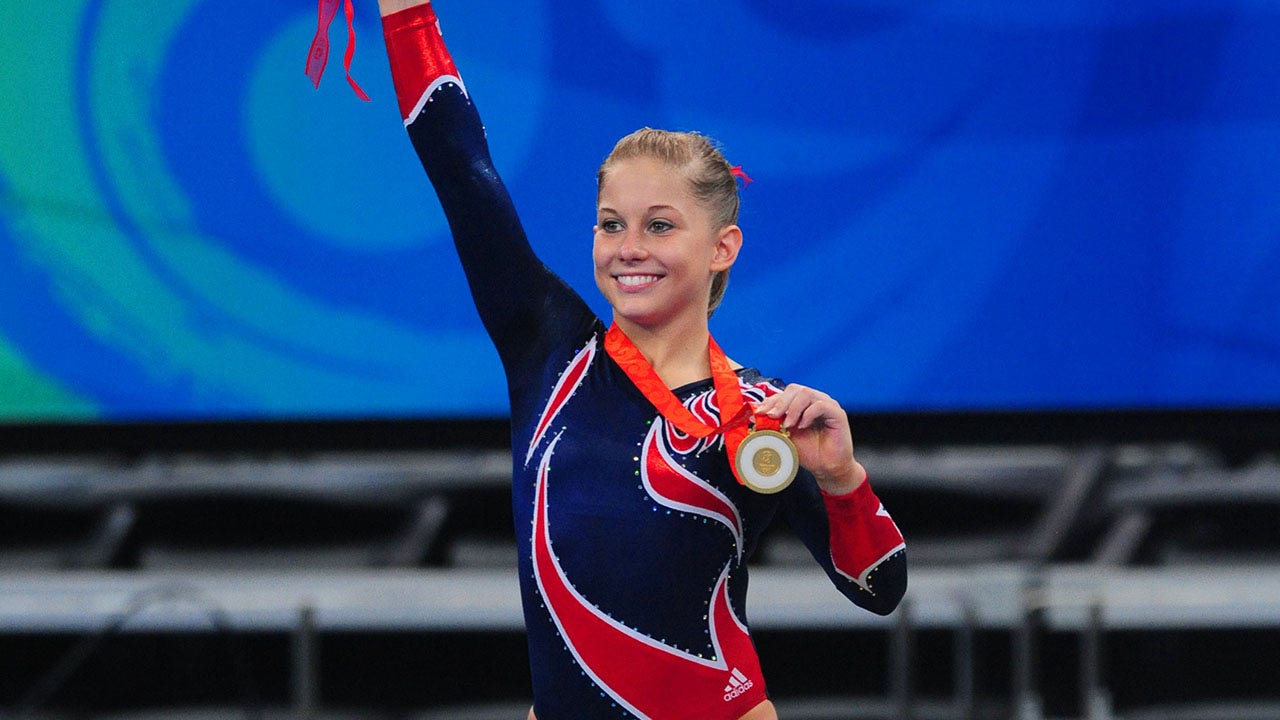
It’s been 16 years since Shawn Johnson, then just a 4-foot-11, 16-year-old, won the hearts of Americans by winning gold at the 2008 Beijing Olympics.
Johnson was the gold medalist on the balance beam and earned three silvers in the floor, all-around (losing to teammate Nastia Liukin) and team events (Liukin also won silver in the balance beam).
It was the only Olympic Games Johnson would compete in. She tore her ACL skiing in 2010 and retired from the sport amid a comeback for the 2012 games. However, she lived out the moment she “dreamt of my whole life.”
Shawn Johnson celebrates her gold medal on the balance beam during the gymnastics apparatus finals at the National Indoor Stadium during the 2008 Beijing Olympic Games. (Mark J. Rebilas/USA Today Sports)
Johnson earned the rare opportunity to represent the United States; wear the red, white, and blue; and hear her country’s national anthem with Olympic gold draped around her neck.
“It was the greatest honor of my life at the time,” Johnson said in a recent interview with Fox News Digital, adding that having children has trumped that experience.
“Being able to wear the red, white and blue, seeing the flag be lowered, hearing the anthem, put your hand over your chest. It was this moment I had dreamt of my whole life. And being able to do that not just for myself, but for my coaches and my team and our country, it was a really special moment. It felt very special.”
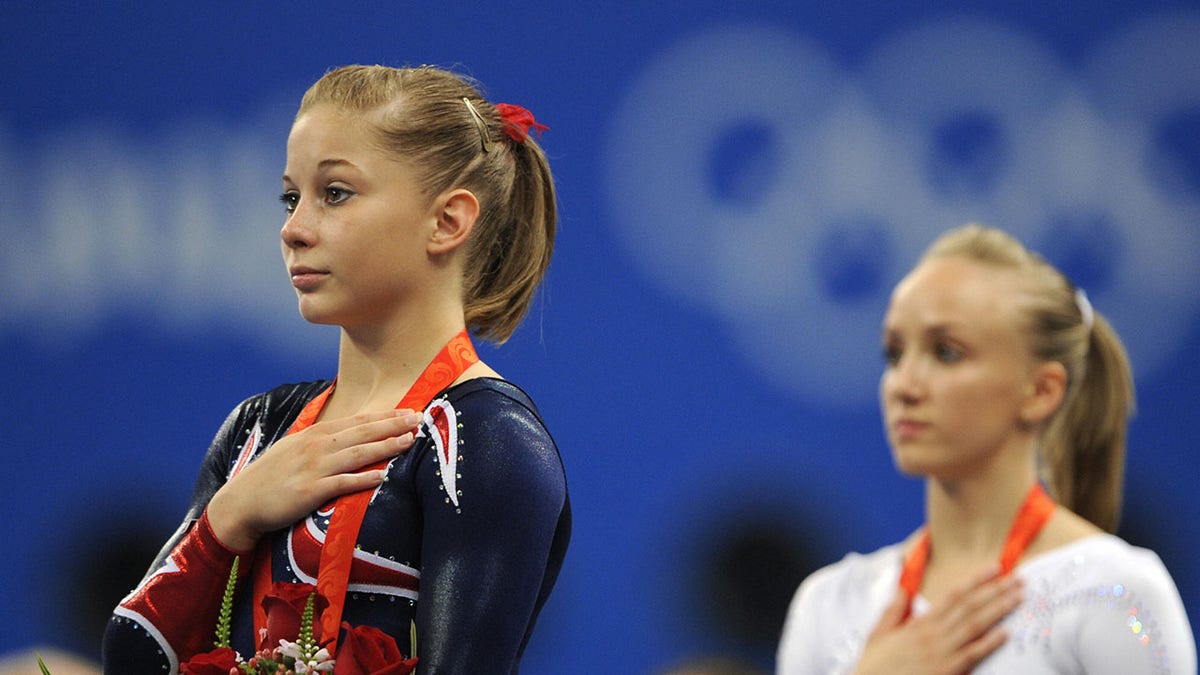
Shawn Johnson, left, and Nastia Liukin of the U.S. stand on the podium after the women’s balance beam final of the artistic gymnastics event of the Beijing 2008 Olympic Games in Beijing Aug. 19, 2008. (Franck Fife/AFP via Getty Images)
FOX SPORTS’ STU HOLDEN REVEALS ‘DOOMSDAY’ SUMMER SCENARIO WHERE GREGG BERHALTER COULD BE OUT AS COACH
Johnson will be in Paris this summer for the Olympics with her family for what she described as a “full-circle moment” that’s admittedly “cliché and cheesy.”
But she says she will be a “giant cheerleader.”
“I feel like its such a small world that I know the girls through a couple degrees of separation. I’m an old has-been. I’m not in it anymore, but I will be there cheering for them and will be the one saying, ‘No matter what you do, you’ve done an incredible job.’ They’re superhuman, and I’m just cheering them on.”
Johnson’s attendance at the games comes at maybe the peak of women’s sports. Women’s gymnastics is always must-watch television every four years, but this time, it’s a bit different.

Shawn Johnson of the U.S. in action during her gold medal win in the women’s balance beam final at National Indoor Stadium in Beijing, China. (Al Tielemans/Sports Illustrated via Getty Images)
“Me, as a mother to a daughter, I’m so excited. I don’t know what it means in particular. I just love that women’s sports are getting the attention they deserve,” Johnson said.
“I think every athlete, male or female, that works their entire life to get to the Olympic Games deserves a platform and the attention that they worked for. I think being able to go into these Olympic Games with that shared excitement across all platforms, both genders, I think is really, really cool.”
Follow Fox News Digital’s sports coverage on X, and subscribe to the Fox News Sports Huddle newsletter.
-

 News1 week ago
News1 week agoCompass Direct LLC’s 2024 Registration in North Carolina
-

 News1 week ago
News1 week agoMan, 75, confesses to killing wife in hospital because he couldn’t afford her care, court documents say
-

 Politics1 week ago
Politics1 week agoRFK Jr said a worm ate part of his brain and died in his head
-

 World1 week ago
World1 week agoConvicted MEP's expense claims must be published: EU court
-

 World1 week ago
World1 week agoPentagon chief confirms US pause on weapons shipment to Israel
-

 Politics1 week ago
Politics1 week agoBiden takes role as bystander on border and campus protests, surrenders the bully pulpit
-

 Politics1 week ago
Politics1 week agoHere's what GOP rebels want from Johnson amid threats to oust him from speakership
-

 World1 week ago
World1 week agoPro-Palestine protests: How some universities reached deals with students

